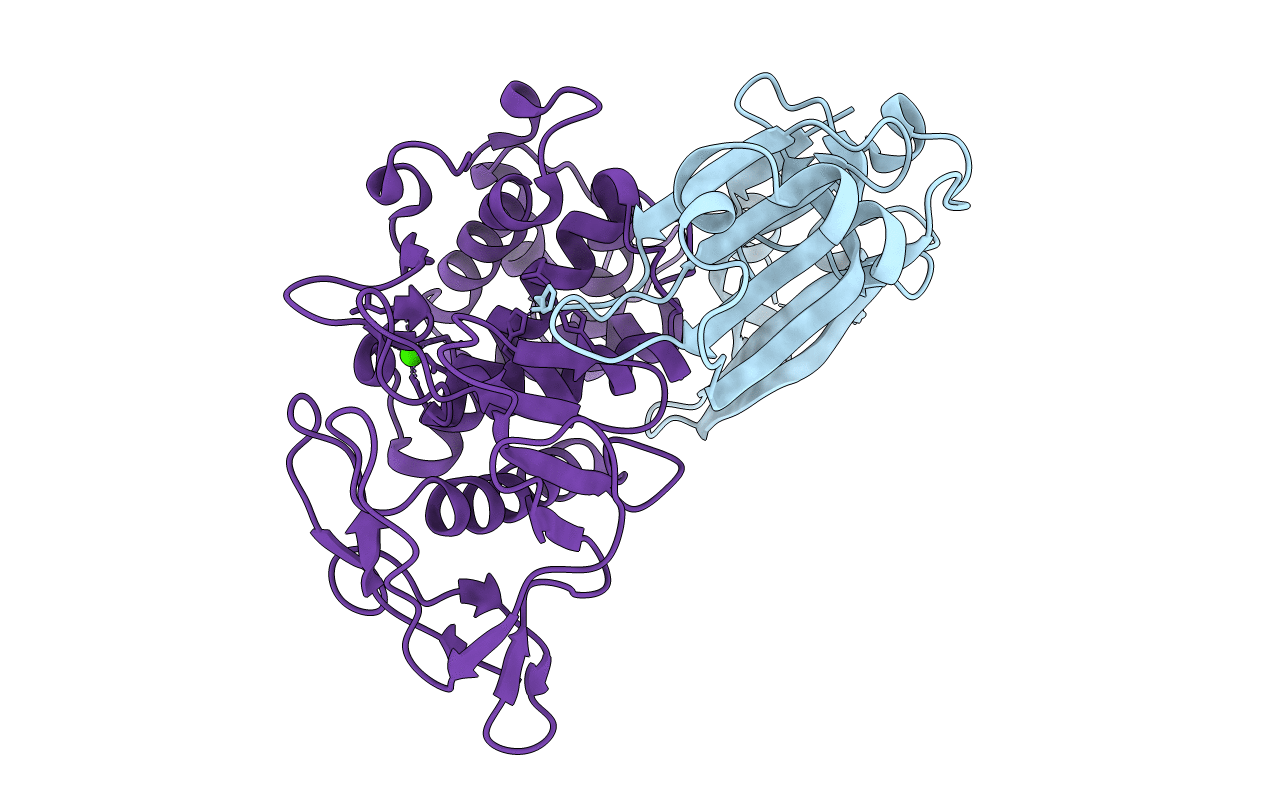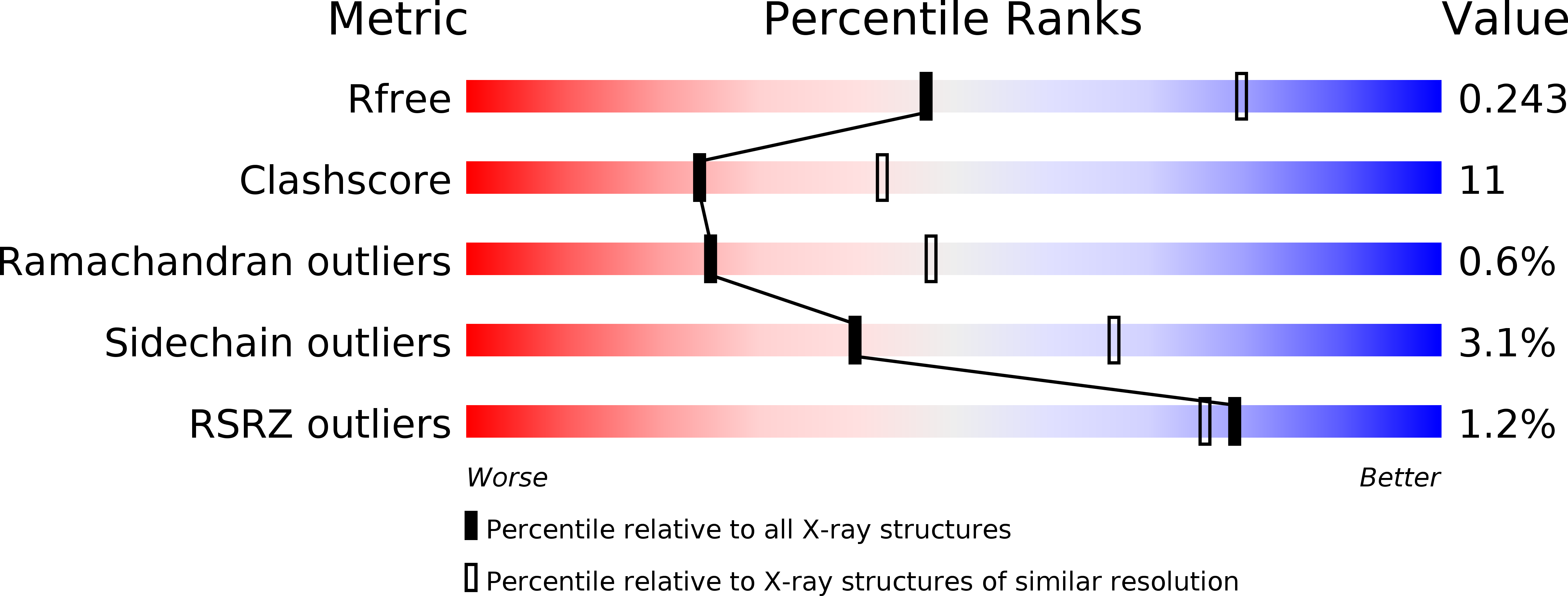
Deposition Date
2010-06-30
Release Date
2010-10-06
Last Version Date
2024-11-06
Entry Detail
PDB ID:
3NQY
Keywords:
Title:
Crystal structure of the autoprocessed complex of Vibriolysin MCP-02 with a single point mutation E346A
Biological Source:
Source Organism:
Pseudoalteromonas sp. (Taxon ID: 234831)
Host Organism:
Method Details:
Experimental Method:
Resolution:
2.60 Å
R-Value Free:
0.25
R-Value Work:
0.19
R-Value Observed:
0.19
Space Group:
P 32 2 1


